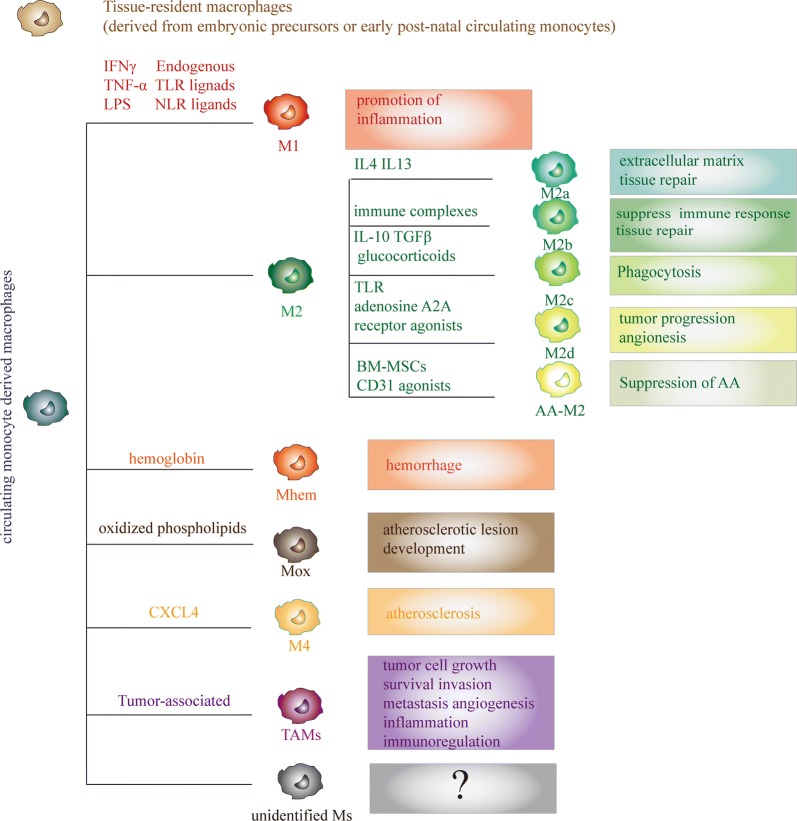Fig. 1.
Characteristics of sub-populations of macrophages derived from circulating monocytes and its functions. Tissue-resident macrophages, derived from embryonic precursors or early post-natal circulating monocytes, play an important role in embryonic development. Macrophages derived from circulating monocytes can be categorized as various phenotypes. M1 macrophages can be induced from innate macrophages stimulated by IFNs, LPS, TNF-α, TLR ligands and NLR ligands. M1 macrophages function as pro-inflammatory macrophages. M2 macrophages are known as alternatively activated macrophages and can be subcategorized as M2a (stimulated by IL4, IL13; function is extracellular matrix tissue repair), M2b (stimulated by immune complexes; function is to suppress immune response and tissue repair), M2C (stimulated by IL-10, TGFβ, glucocorticoids; function is related to phagocytosis), M2d (stimulated by TLR, adenosine A2A, receptor agonists; function is tumor progression angiogenesis), AA-M2 (stimulated by BM-MSCs/CD31 agonists in AngII induced AA, function is suppression of AA). Mhem is associated with hemorrhage, which is induced by hemoglobin. Mox is generated by oxidized phospholipids. M4 macrophages are induced by chemokine ligand 4 (CXCL4), which is related to atherosclerosis. Tumor-associated macrophages (TAMs) are key players in the link between inflammation and cancer. There may be more unidentified subpopulation of macrophages that will be discovered in future studies. IFNs interferons, AA aortic aneurysm, IL 4 interleukin-4, IL13 interleukin-13, TLR Toll-like receptor, NLR NOD-like receptor, AngII angiotensin II, TNF-α tumor necrosis factor-α

